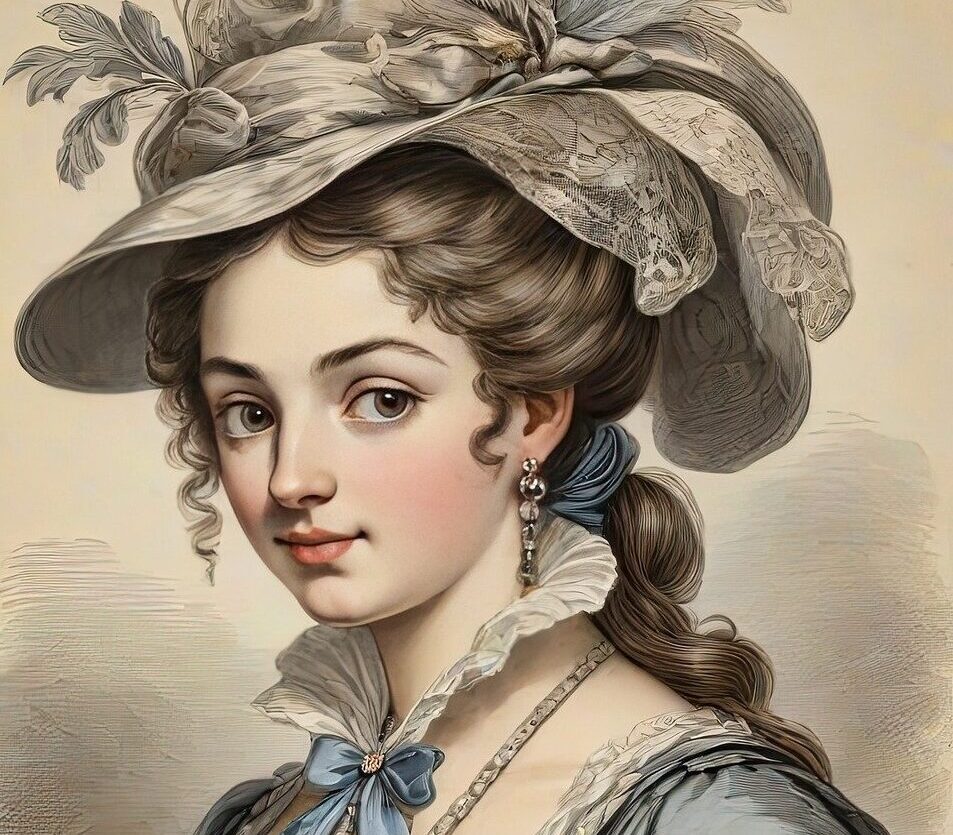
Analyzing TikToks for My 18th Century English Final
My junior year of college, I took an 18th century English Literature class called Circulating Bodies, and the final assignment for that course was a research paper. Throughout the semester, the class had been analyzing common themes, figures, and concepts that had emerged repeatedly in the 18th century literature we read.
The 18th Century Coquette and the 21st Century Coquette Aesthetic
One such figure was the coquette. Flighty, flirty, and vain, the 18th century coquette often appeared as a younger woman who refused to take life too seriously. This figure immediately caught my attention because of her connection to a modern day social media trend termed “the coquette aesthetic.” The coquette aesthetic is categorized by all things feminine, usually emphasizing fashion and beauty objects such as bows, frills, and pastel colors. For example, TikTok posts that demonstrate the coquette aesthetic often feature short video clips spliced together showing makeup products and pastel pink clothes with a romantic or classical song playing in the background. For my paper, I wanted to trace the similarities and differences between the modern day media trend and the original figure at its roots.
Researching and Analyzing the Shift from the Coquette to the Coquette Aesthetic
To do so, I relied on rather unconventional sources, examining TikTok videos and Pinterest posts with as much rigor as traditional 18th century English texts. It was important to describe how, with time, the coquette morphed from a singular figure into a wider aesthetic. I explained this change by close reading two images: one from the 18th century depicting a woman dressed as a coquette for a play and one from Pinterest that included a collage of various pictures conveying the coquette aesthetic. I clarified how the visual shift from a singular figure to a more general aesthetic mirrored a textual shift; the term “coquette” changed from being used as mainly a noun in the 18th century to being used as mainly an adjective in the 21st century.
Moreover, I explained how the media also shifted from representing her person mostly through text in the past to representing her aesthetic more often through visual imagery in the present. For instance, in my research, it was much easier to find visual representations of the current coquette aesthetic than visual representations of the past coquette figure.
This paper gave me the opportunity to argue that the coquette aesthetic was a modern day evolution of a figure that had fascinated society in the 18th century and continued to do so, albeit in a different manner, in the 21st century. Additionally, it allowed me to combine my interest in traditional written forms of communication—like books and magazines—with fairly novel visual forms of communication—like memes, mood boards, and video montages.


This image is a portion of the notes that I wrote while writing my final paper. It depicts a rough outline for my essay, with general sections covering the 18th-century coquette, a transition paragraph between time frames, and the 21st-century coquette aesthetic trend. Any possible evidence for my arguments that I found while researching is linked in the document and color-coded according to the section of the paper it is relevant to. Click to view further.